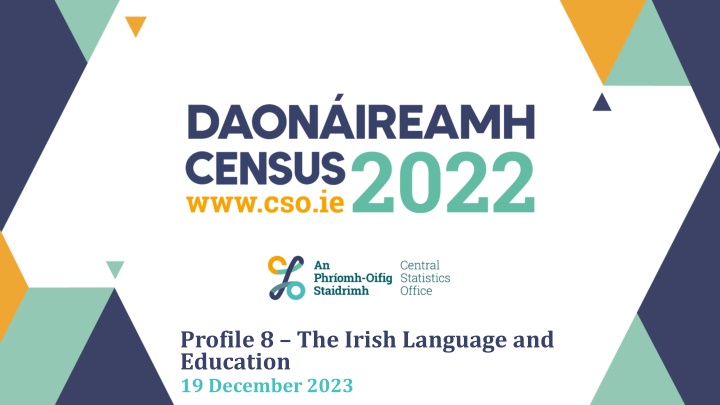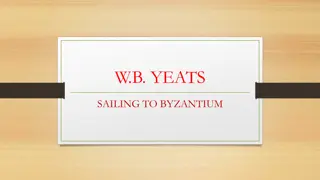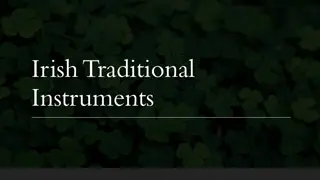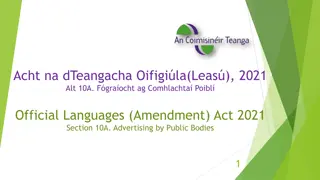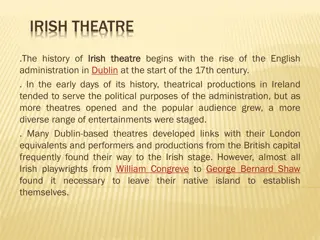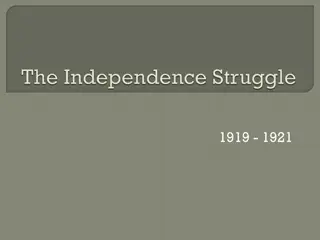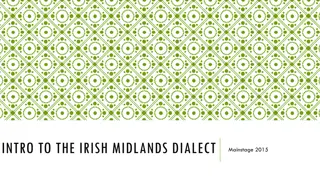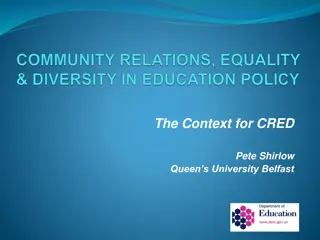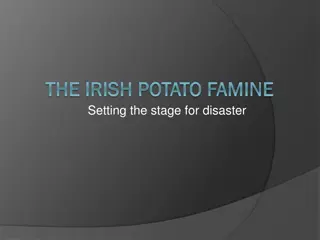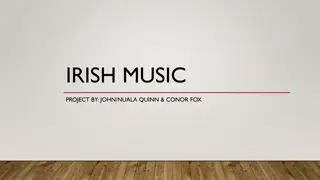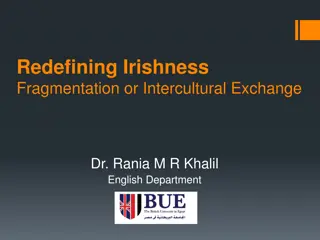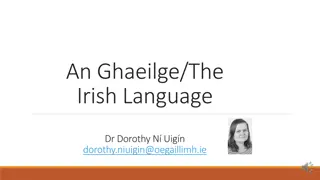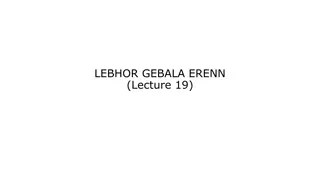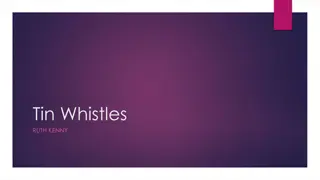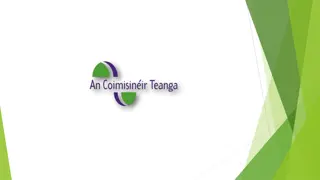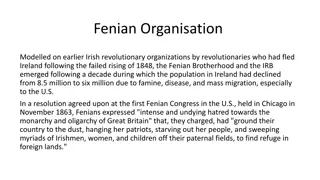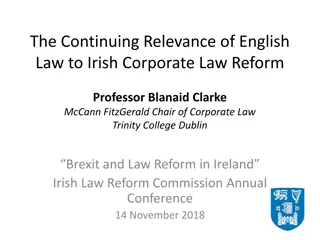Insights into the Irish Language and Education Landscape
Explore the intriguing details of the Irish language and education scenario, including statistics on Irish speakers, the Gaeltacht areas, levels of Irish spoken, educational attainment over time, and more. Delve into the evolving patterns of Irish language usage and educational achievements within the Irish population.
Download Presentation

Please find below an Image/Link to download the presentation.
The content on the website is provided AS IS for your information and personal use only. It may not be sold, licensed, or shared on other websites without obtaining consent from the author.If you encounter any issues during the download, it is possible that the publisher has removed the file from their server.
You are allowed to download the files provided on this website for personal or commercial use, subject to the condition that they are used lawfully. All files are the property of their respective owners.
The content on the website is provided AS IS for your information and personal use only. It may not be sold, licensed, or shared on other websites without obtaining consent from the author.
E N D
Presentation Transcript
Profile 8 The Irish Language and Education 19 December 2023
Introduction Topics include: Irish Language and the Gaeltacht. Education Level and Economic Status. Third level education. 2
1. Irish Language and The Gaeltacht
Irish Speakers 1.87 million - 40% of the population aged three years and over. 112,600 more people who could speak Irish compared with Census 2016, an increase of 6%. There were 6,685 Irish language Census forms completed by households in 2022. 4
Level of Irish Spoken Expanded question in Census 2022. 10% declared they spoke Irish very well. 32% indicated they spoke Irish well. Of Irish speakers, 55% didn t speak Irish well. 5
Level of Irish Spoken & Frequency 90% who spoke Irish daily outside education spoke it very well or well. Less often than weekly outside education, 62% said they didn t speak it well. 84% who never spoke Irish outside the education system did not speak it well. 6
The Gaeltacht 106,200 people living in the Gaeltacht 2022, +6,600 (7%). 5% increase compared with 2011. All eight Gaeltacht areas saw a population increase. Largest percentage increase - Waterford (+14% or 250 people). 7
Irish Speakers in the Gaeltacht 65,200 could speak Irish. Increase of 1,500 on the 2016 figure (+2%). Proportion fell from 69% in 2011 to 66% in 2022. The Mayo (-3%) and Donegal (-2%) Gaeltacht areas saw the largest falls. 8
2. Education Level and Economic Status
Level of Education Over Time Third level rising from 14% in 1991 to 48% in 2022. Opposite occurred for no formal education or primary education only. In 1991, 34% were not educated higher than primary school level. The equivalent percentage in 2022 was 11%. 10
People with No Formal or Primary Education Only 10% had no formal or primary school education only, down from 12% in 2016. Nearly one-quarter of these indicated that they had no formal education (81,300 people). Under 11,000 people with no formal or primary education only were aged between 15 and 29 years. Most (61%) were males. 11
Level of Education by Age 58% of people aged 15 to 44 had a third level qualification. This was 22% of those aged 65 and over. Primary level only for those aged 65 and over was 28%. This was just 3% of people aged between 15 and 44 years. 12
Early School Leavers 8% in 2022 (269,752 people). In 2022, almost 57% of early school leavers were male. Down from 13% in 2011 and 10% in 2016. 68% were aged 60 years and over in 2022. In 2016, 62% of early school leavers were aged 60 years and over. In 2011, 55% early school leavers were in the same age group. 13
Highest Level of Education and Industry Agriculture, Forestry & Fishing was the industrial sector with the highest percentage educated to primary level or lower (13%). Wholesale & Retail Trade sector had the highest percentage (41%) of workers with upper secondary. 84% in Information & Communication activities had a third level degree. Followed by Education (82%) and Financial & Insurance activities (81%). 14
3. Third Level Education
Third Level Education, Males versus Females In 1991, 14% of males and 13% of females were educated to third level. By 2022, 50% of women were educated to third level compared with 46% of men. 16
Doctorates More than 38,200 people had a doctorate (+33% since 2016 & 74% since 2011). More men (53%) than women. The gap narrowed since 2011 (men represented 59%). Unemployment rate for the group of 3% (821 people). Over one-third worked in Higher education (10,504 people). 17
Third Level Education of Recent Immigrants 77,300 people aged 15 years and over came to live in the State (+7%). Of these, 47,500 had ceased their education (61%). One-third were Irish citizens (15,700) of whom 75% had a third level education. Of the non-Irish citizens, 67% had a third level qualification or higher. 88% of the Indian citizens, American citizens (86%) and French citizens (84%). 18
